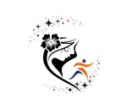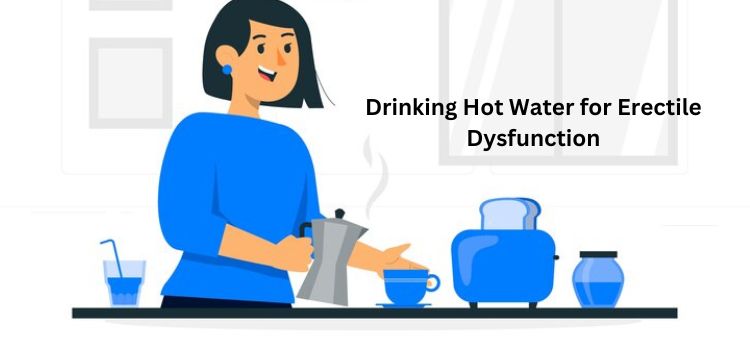Stress is an ineluctable part of life, affecting individuals in colorful aspects of their particular and professional lives. Whether it’s deadlines at work, fiscal pressures, or relationship challenges, stress can take a risk on physical, emotional, and internal well-being. While cognitive ways similar to cognitive-behavioral remedies focus on changing study patterns and comprehensions to reduce stress, non-cognitive ways target physical sensations and actions.
In this comprehensive companion, we’ll claw into several on-cognitive ways for stress operation, exploring their benefits, operations, and effectiveness in promoting overall well-being.

Understanding non-cognitive ways
Non-cognitive ways of stress operation encompass a different range of practices that target physical sensations, actions, and physiological responses to stress. Unlike cognitive ways that involve changing studies and beliefs about stressors, non-cognitive ways aim to directly impact the body’s stress response.
These ways concentrate on promoting relaxation, reducing muscle pressure, and fostering a sense of calmness and well-being. By incorporating non-cognitive ways into their routine, individuals can develop less adaptability to stress and enhance their overall quality of life.
Deep Breathing Exercises a Foundation for Relaxation
Deep breathing exercises are an abecedarian non-cognitive fashion for stress operation, embedded in the principles of awareness and relaxation. These exercises involve taking slow, deep breaths to spark the body’s relaxation response and offset the goods of stress.
By fastening on the sensations of inhalation and exhalation, individualities can reduce muscle pressure, lower heart rate, and promote passions of calmness and tranquility. Deep breathing exercises can be rehearsed anytime, anywhere, making them an accessible and accessible tool for managing stress in diurnal life.
Progressive Muscle Relaxation Releasing Pressure from Within
Progressive muscle relaxation is another non-cognitive fashion that targets physical sensations to reduce stress and promote relaxation. Developed by American croaker Edmund Jacobson in the 1920s, this fashion involves tightening and relaxing different muscle groups throughout the body.
By purposely tightening and then releasing pressure in specific muscle groups, individuals can become more apprehensive of areas of pressure and learn to relax them. Progressive muscle relaxation helps palliate physical symptoms of stress, similar to muscle pressure and discomfort and fosters a sense of calmness and well-being.
Physical Exercise Nurturing the Mind-Body Connection
Engaging in regular physical exercise is an important non-cognitive fashion for managing stress and perfecting overall well-being. Exercise has been shown to reduce situations of stress hormones similar to cortisol and adrenaline while adding the product of endorphins, chemicals in the brain that act as natural mood lifters.
Whether it’s going for a brisk walk, rehearsing yoga, or sharing in platoon sports, physical exertion can help individuals manage stress and enhance their adaptability to life’s challenges. also, exercise promotes physical health and vitality, contributing to a sense of well-being and fulfillment.
Guided Imagery Employing the Power of Visualization
Guided imagery is a relaxation fashion that involves imaging peaceful and calming scenes to elicit a sense of relaxation and well-being. By mentally immersing oneself in a tranquil terrain, similar to sand or timber, individualities can produce an internal escape from stress and pressure.
Guided imagery sessions generally involve harkening to a recording or script that guides the existent through the visualization process, helping them valve into their imagination and produce a sense of inner calm. Guided imagery can be used as a standalone practice or combined with other relaxation ways to enhance its effectiveness in managing stress.
Journaling Unleashing the Power of Tone- Expression
Journaling is a non-cognitive fashion that involves writing down studies, passions, and guests as a way to reuse feelings and gain sapience into stressors. By putting studies and feelings into words, individuals can gain clarity and perspective on their stressors and identify patterns and triggers.
Journaling can also serve as a form of tone expression and emotional release, furnishing a safe outlet for recycling delicate feelings. Whether it’s jotting down daily reflections, expressing gratefulness, or exploring creative jotting prompts, journaling allows individuals to personalize their stressors and explore them from a more objective viewpoint.
Conclusion Embracing Non-Cognitive ways for Stress operation
Pressure, and enhancing overall well-being. From deep breathing exercises and progressive muscle relaxation to physical exercise, guided imagery, and journaling, these ways give individuals different strategies for managing stress and fostering adaptability.
By incorporating non-cognitive ways into their routine, individuals can develop lesser tone- mindfulness, cultivate inner calmness and navigate life’s challenges with grace and adaptability. Eventually, embracing non-cognitive ways empowers individuals to take control of their stressful situations and lead happier, healthier lives.
FAQs About Stress Operation
1. How can I tell if I am passing stress?
• Stress can manifest in colorful ways, including physical symptoms similar to headaches, muscle pressure, and fatigue, as well as emotional symptoms like perversity, anxiety, and mood swings. Pay attention to changes in your body and mood, as well as any changes in your sleep or eating habits, which can indicate elevated stress situations.
2. What are some quick and easy stress operation ways I can try?
• There are several simple ways you can use to manage stress on the spot, similar to deep breathing exercises, progressive muscle relaxation, and guided imagery. Taking many moments to concentrate on your breath or fantasize about a peaceful scene can help calm your mind and reduce stressful situations in the moment.
3. How can I incorporate stress operation into my diurnal routine?
• Integrating stress operation ways into your diurnal routine can help you make adaptability and manage more effectively with stress over time. Consider setting aside time each day for conditioning similar to exercise, awareness contemplation, or journaling, and prioritize tone-care practices that promote relaxation and well-being.
4. What part do diet and nutrition play in stress operation?
• Diet and nutrition play a significant part in stress operation, as certain foods and nutrients can impact mood, energy situations, and overall well-being. Aim to eat a balanced diet rich in fruits, vegetables, whole grains, and spare proteins, and limit consumption of sticky, reused foods and caffeine, which can complicate stress and anxiety.
5. When should I seek professional help for stress operation?
• While tone-care strategies can be effective for managing everyday stressors, it’s important to seek professional help if stress becomes inviting or begins to intrude with your diurnal life. A therapist or counselor can give support, guidance, and substantiated managing strategies to help you navigate stress more effectively and ameliorate your overall quality of life.


